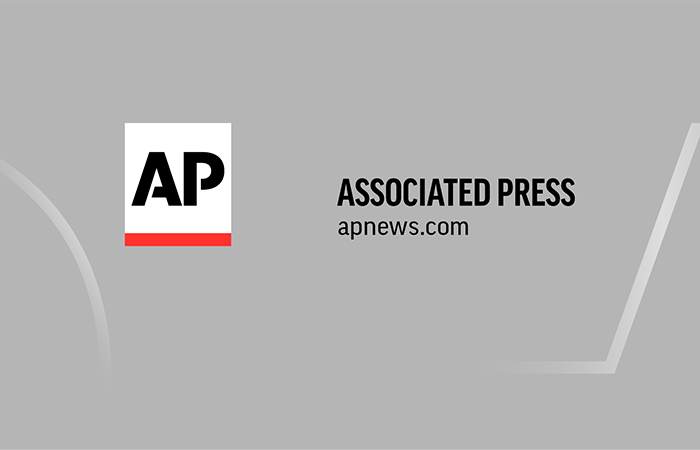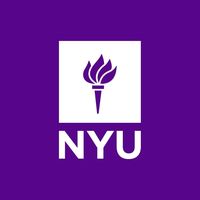Navigating the Stormy Seas of Student Loans and Activism
May 21, 2025, 5:48 pm
In the world of student loans, confusion reigns. Borrowers are caught in a whirlwind of policies, deadlines, and legal battles. The landscape shifts like sand underfoot. One moment, applications for income-driven repayment plans are open; the next, they’re paused. The Biden administration’s SAVE plan promised a lifeline, but a federal court’s ruling turned it into a mirage. Now, borrowers are left adrift, seeking clarity.
The Education Department recently reopened applications for income-driven repayment plans. But the process is slow. The clock ticks, and borrowers are left waiting. Each application is a small boat in a vast ocean, navigating through waves of uncertainty. The Income-Based Repayment Plan, Pay as You Earn, and Income-Contingent Repayment plans are available. Yet, the approval process is sluggish. Patience is a virtue, but for many, it feels like a burden.
Recertification is another hurdle. Borrowers must update their income and family size annually. Notifications are sent, but they often feel like whispers in a storm. Each borrower’s timeline is unique, adding to the chaos. The loan simulator at studentaid.gov offers a glimmer of hope, a tool to help borrowers chart their course.
For those who applied to the SAVE plan, the situation is precarious. They’re in administrative forbearance, meaning no payments are due, and interest isn’t accruing. But this time doesn’t count toward Public Service Loan Forgiveness. The future is uncertain, and borrowers are left wondering when the storm will pass.
Consolidation offers a potential refuge. Borrowers can combine multiple loans into one, simplifying their payments. But this process is a one-time opportunity, and it takes time. Sixty days can feel like an eternity when you’re waiting for relief.
The specter of loan forgiveness looms large. The Education Department has made it clear: reinstating canceled loans is unlikely. Borrowers who thought they were free may find themselves shackled once more. The Public Service Loan Forgiveness program remains intact for now, but changes could be on the horizon. The winds of policy shift constantly, and borrowers must stay vigilant.
Communication with loan servicers is crucial. Yet, many borrowers find themselves in a frustrating limbo. Long wait times and dropped calls are common. The frustration builds like a pressure cooker. Borrowers are urged to prepare for lengthy holds, armed with patience and determination.
Delinquency is a looming threat. If payments are missed for 270 days, default becomes a reality. The consequences are severe. Credit scores plummet, and the road to recovery becomes steep. Borrowers are advised to act quickly, seeking options like forbearance or deferment. The stakes are high, and the pressure is palpable.
For those already in default, the path to redemption is narrow. The Education Department offers guidance, but the process can feel daunting. Loan rehabilitation is a lifeline, but it requires commitment. Nine months of on-time payments can lift borrowers out of the abyss. Yet, this option is limited to once in a lifetime.
As the dust settles on the Fresh Start program, many borrowers are left to navigate the aftermath. This temporary relief has ended, leaving a void. The landscape of student loans is a treacherous one, filled with pitfalls and challenges.
In a different realm, the story of Mohsen Mahdawi unfolds. Freed from ICE custody, he graduates from Columbia University, a bittersweet victory. His journey is marked by activism and resilience. Mahdawi’s voice echoes through the halls of academia, a reminder of the struggles faced by many.
Columbia, once a sanctuary, now feels like a battleground. Mahdawi accuses the administration of betrayal, claiming it has sold its soul to political pressures. The university’s decisions weigh heavily on him, a constant reminder of the challenges faced by marginalized voices.
Born in a refugee camp, Mahdawi’s journey to the U.S. was fraught with obstacles. At Columbia, he became a beacon of hope, organizing protests and advocating for Palestinian rights. His graduation is a testament to perseverance, but it’s overshadowed by the absence of his friend Khalil, still imprisoned.
The cheers from the crowd resonate with a powerful message: justice, peace, and equality. Mahdawi stands at the crossroads of his future, contemplating his next steps. A master’s program in peacekeeping and conflict resolution awaits, but financial aid remains elusive. The uncertainty looms large, casting a shadow over his aspirations.
As universities brace for potential disruptions, the atmosphere is charged. The stakes are high, and the tension palpable. Mahdawi’s story is a microcosm of a larger struggle, a fight for recognition and justice in a world that often turns a blind eye.
In the end, both student loan borrowers and activists like Mahdawi navigate turbulent waters. The challenges are immense, but so is the resolve. Whether it’s managing debt or advocating for change, the journey is fraught with obstacles. Yet, hope remains a guiding star, illuminating the path forward. In this stormy sea, resilience is the anchor that keeps us grounded.
The Education Department recently reopened applications for income-driven repayment plans. But the process is slow. The clock ticks, and borrowers are left waiting. Each application is a small boat in a vast ocean, navigating through waves of uncertainty. The Income-Based Repayment Plan, Pay as You Earn, and Income-Contingent Repayment plans are available. Yet, the approval process is sluggish. Patience is a virtue, but for many, it feels like a burden.
Recertification is another hurdle. Borrowers must update their income and family size annually. Notifications are sent, but they often feel like whispers in a storm. Each borrower’s timeline is unique, adding to the chaos. The loan simulator at studentaid.gov offers a glimmer of hope, a tool to help borrowers chart their course.
For those who applied to the SAVE plan, the situation is precarious. They’re in administrative forbearance, meaning no payments are due, and interest isn’t accruing. But this time doesn’t count toward Public Service Loan Forgiveness. The future is uncertain, and borrowers are left wondering when the storm will pass.
Consolidation offers a potential refuge. Borrowers can combine multiple loans into one, simplifying their payments. But this process is a one-time opportunity, and it takes time. Sixty days can feel like an eternity when you’re waiting for relief.
The specter of loan forgiveness looms large. The Education Department has made it clear: reinstating canceled loans is unlikely. Borrowers who thought they were free may find themselves shackled once more. The Public Service Loan Forgiveness program remains intact for now, but changes could be on the horizon. The winds of policy shift constantly, and borrowers must stay vigilant.
Communication with loan servicers is crucial. Yet, many borrowers find themselves in a frustrating limbo. Long wait times and dropped calls are common. The frustration builds like a pressure cooker. Borrowers are urged to prepare for lengthy holds, armed with patience and determination.
Delinquency is a looming threat. If payments are missed for 270 days, default becomes a reality. The consequences are severe. Credit scores plummet, and the road to recovery becomes steep. Borrowers are advised to act quickly, seeking options like forbearance or deferment. The stakes are high, and the pressure is palpable.
For those already in default, the path to redemption is narrow. The Education Department offers guidance, but the process can feel daunting. Loan rehabilitation is a lifeline, but it requires commitment. Nine months of on-time payments can lift borrowers out of the abyss. Yet, this option is limited to once in a lifetime.
As the dust settles on the Fresh Start program, many borrowers are left to navigate the aftermath. This temporary relief has ended, leaving a void. The landscape of student loans is a treacherous one, filled with pitfalls and challenges.
In a different realm, the story of Mohsen Mahdawi unfolds. Freed from ICE custody, he graduates from Columbia University, a bittersweet victory. His journey is marked by activism and resilience. Mahdawi’s voice echoes through the halls of academia, a reminder of the struggles faced by many.
Columbia, once a sanctuary, now feels like a battleground. Mahdawi accuses the administration of betrayal, claiming it has sold its soul to political pressures. The university’s decisions weigh heavily on him, a constant reminder of the challenges faced by marginalized voices.
Born in a refugee camp, Mahdawi’s journey to the U.S. was fraught with obstacles. At Columbia, he became a beacon of hope, organizing protests and advocating for Palestinian rights. His graduation is a testament to perseverance, but it’s overshadowed by the absence of his friend Khalil, still imprisoned.
The cheers from the crowd resonate with a powerful message: justice, peace, and equality. Mahdawi stands at the crossroads of his future, contemplating his next steps. A master’s program in peacekeeping and conflict resolution awaits, but financial aid remains elusive. The uncertainty looms large, casting a shadow over his aspirations.
As universities brace for potential disruptions, the atmosphere is charged. The stakes are high, and the tension palpable. Mahdawi’s story is a microcosm of a larger struggle, a fight for recognition and justice in a world that often turns a blind eye.
In the end, both student loan borrowers and activists like Mahdawi navigate turbulent waters. The challenges are immense, but so is the resolve. Whether it’s managing debt or advocating for change, the journey is fraught with obstacles. Yet, hope remains a guiding star, illuminating the path forward. In this stormy sea, resilience is the anchor that keeps us grounded.

